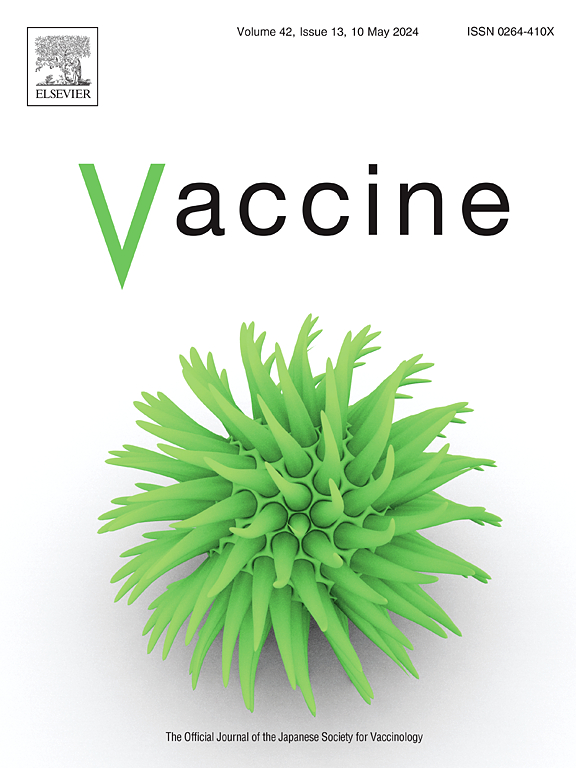为下一次大流行制定公平的全球疫苗战略的主要特点是什么?流行病控制专家的定性研究
IF 4.5
3区 医学
Q2 IMMUNOLOGY
引用次数: 0
摘要
COVID-19大流行暴露了全球卫生多边主义的重大弱点,特别是未能实现COVID-19疫苗的全球公平和公正分配。疫苗问世后不久,全球北方和全球南方人口之间疫苗接种率的巨大不平等变得明显起来。本研究探讨了为什么多边主义在大流行期间如此不足,并确定了现在必须采取的步骤,以确保下一次大流行时全球疫苗公平。方法于2023年5月至2024年1月对全球20名专家关键线人(ki)进行深度访谈,包括16次个人访谈和2次小组访谈(每组访谈2名ki)。专家包括学术界、多边卫生和发展机构、民间社会组织、非政府组织、智库和制药业的代表。我们采用定性研究设计来探讨全球卫生专家的观点、经验和见解。我们采用有目的抽样的方法,根据参与者在大流行性疫苗和大流行性防范方面的经验和知识来选择他们。我们继续进行采访,直到达到理论饱和。关于为何多边主义在全球COVID-19疫苗分发方面不足,出现了五个关键主题。优先考虑国家利益——所谓的“疫苗民族主义”——是共享疫苗的一个障碍。全球疫苗共享机制covid - 19缺乏高收入和中高收入国家参与的激励措施,也缺乏促使它们参与的强制性机制,削弱了其作为公平分配平台的能力。covid - 19还将重要组成部分排除在决策过程之外。富裕国家得益于与制药公司建立的长期关系,在全球经济中拥有更强大的市场力量。疫苗供应不足导致分配不公平。关于如何在下一次大流行中避免全球疫苗不平等,出现了五个关键主题。促进区域在研发和疫苗生产方面的自给自足至关重要。建设生产能力不能推迟到下一次大流行,必须从现在开始。国际集体行动仍然很重要,特别是全球北方的大公司与全球南方的伙伴之间的技术转让协定以及南南伙伴关系。为大流行性流感疫苗开发提供的公共资金应包括支持全球获取的条件。最后,新型知识产权协议对于为下一次大流行做准备至关重要。疫苗民族主义——加上疫苗供应受限、全球北方国家主导制造业以及富裕国家更大的购买力——为富裕国家购买全部供应创造了一场“完美风暴”,将covid - 19和许多低收入和中等收入国家排在队伍的后面。为了在下一次大流行中防止这种不公平现象,各区域不仅应该在生产疫苗方面建立能力,而且还应该在监管审批以及疫苗的大规模融资和采购方面建立能力。这种能力需要现在就建立——不能推迟到下一次危机。本研究由纽约卡内基公司(https://www.carnegie.org/grants/grants-database/?q=duke&per_page=25#!/grants/grants-database/grant/937399121.0/)向杜克大学提供的研究补助金资助。本文章由计算机程序翻译,如有差异,请以英文原文为准。
What are the key features of an equitable global vaccine strategy for the next pandemic? A qualitative study of pandemic control experts
Background
The COVID-19 pandemic exposed significant weaknesses in global health multilateralism, particularly in its failure to achieve fair and equitable global distribution of COVID-19 vaccines. Soon after vaccines were available, huge inequities in vaccination rates between populations in the global north and the global south became apparent. This study explores why multilateralism fell so short during the pandemic and identifies the steps that must be taken now to ensure global vaccine equity in the next pandemic.
Methods
We conducted in-depth interviews with 20 expert key informants (KIs) worldwide from May 2023 to January 2024, comprising 16 individual interviews and two group interviews (each group interview had two KIs). The experts included representatives of academia, multilateral health and development agencies, civil society organizations, non-governmental organizations, think tanks, and the pharmaceutical industry. We used a qualitative study design to explore the perspectives, experiences, and insights of global health experts. We used purposive sampling to select participants based on their experience and knowledge of pandemic vaccines and pandemic preparedness. We continued conducting interviews until we had reached theoretical saturation.
Findings
Five key themes emerged on why multilateralism fell short when it came to global COVID-19 vaccine distribution. Prioritization of national interests—so-called “vaccine nationalism”—was a barrier to sharing doses. COVAX, the global vaccine sharing mechanism, lacked incentives for high-income and upper-middle-income nations to participate or compulsory mechanisms to make them do so, undercutting its ability to serve as an equitable distribution platform. COVAX also left out important constituents from the decision-making process. Rich countries benefitted from having stronger market power in the global economy due to their established, long-term relationships with the pharmaceutical companies. Inadequate vaccine supply fed into inequitable distribution. Five key themes emerged on ways to avert global vaccine inequity in the next pandemic. Promoting regional self-sufficiency in research and development and vaccine manufacturing is crucial. Building manufacturing capacity cannot be deferred until the next pandemic—it must begin now. International collective action will still be important, especially technology transfer agreements between large companies in the global north and partners in the global south as well as south-south partnerships. Public funding for pandemic vaccine development should include conditionalities that support global access. Finally, new kinds of intellectual property agreements are essential in preparing for the next pandemic.
Interpretation
Vaccine nationalism—combined with vaccine supply constraints, the dominance of manufacturing by countries in the global north, and the greater purchasing power of wealthy nations—created a “perfect storm” for rich nations to buy up the supply and to leave COVAX and many low- and middle-income countries at the back of the queue. To prevent such inequity in the next pandemic, regions should build capacity not just in manufacturing vaccines but also in regulatory approval and the financing and procurement of vaccines at scale. Such capacity needs to be built now—it cannot be deferred until the next crisis.
Funding
This study was funded by a research grant to Duke University from the Carnegie Corporation of New York (https://www.carnegie.org/grants/grants-database/?q=duke&per_page=25#!/grants/grants-database/grant/937399121.0/).
求助全文
通过发布文献求助,成功后即可免费获取论文全文。
去求助
来源期刊

Vaccine
医学-免疫学
CiteScore
8.70
自引率
5.50%
发文量
992
审稿时长
131 days
期刊介绍:
Vaccine is unique in publishing the highest quality science across all disciplines relevant to the field of vaccinology - all original article submissions across basic and clinical research, vaccine manufacturing, history, public policy, behavioral science and ethics, social sciences, safety, and many other related areas are welcomed. The submission categories as given in the Guide for Authors indicate where we receive the most papers. Papers outside these major areas are also welcome and authors are encouraged to contact us with specific questions.
 求助内容:
求助内容: 应助结果提醒方式:
应助结果提醒方式:


